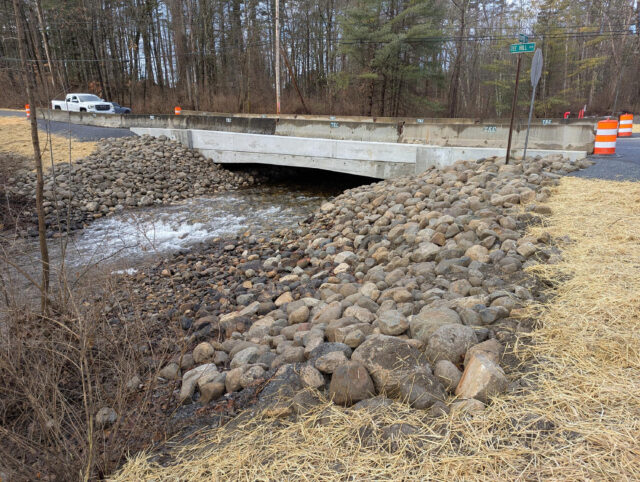



Fairgrounds Bridge Over Wiscoy Creek
Historic Bridge Finds New Life at County Fairgrounds
A Memorandum of Agreement (MOA) by the Federal Highway Administration (FHWA), New York’s State Historic Preservation Office (SHPO), the New York State Department of Transportation (NYSDOT), and Wyoming County was developed to rehabilitate this historic, iron pin-connected, Pratt thru truss bridge – previously located at Schoellkopf Road over Cayuga Creek – and move the structure to provide county fair access over Wiscoy Creek in the Town of Pike, New York. Installing a bridge at this location creates access for vehicles and pedestrians between the fairgrounds and the parking area north of the creek.
The project involved rehabilitating the truss members of the bridge, painting, and reconstructing and installing the rehabilitated bridge on new substructures at the fairground site. The new substructures are concrete-headed sheet pile abutments backed up with geosynthetically reinforced soil systems (GRSS). Additionally, as the adjacent parking lot is prone to flooding, new embankments were constructed as approaches to raise the bridge itself above high water.
The rehabilitated superstructure provides a 101-foot single span with one 14-foot-6-inch lane and a vertical clearance of 10 feet. The entire structure was light enough to fully construct on one shore and lift into place with a crane. The project was planned to be completed in fall 2021; however, due to material and fabrication labor issues associated with Covid-19, the project was completed in May 2022.
This iron pin-connected, Pratt thru-truss bridge is eligible for the National Register of Historic Places based on it being a representative example of the prevailing bridge design style of its time. The form and detailing of the structure were maintained as much as possible. After the structure was dismantled from Schoellkopf Road, the iron members were inspected and sorted based on their condition. Rejected truss members were replaced as closely to their original form as possible, while unique members such as steel eyebars and built-up compression chords were fabricated new.










